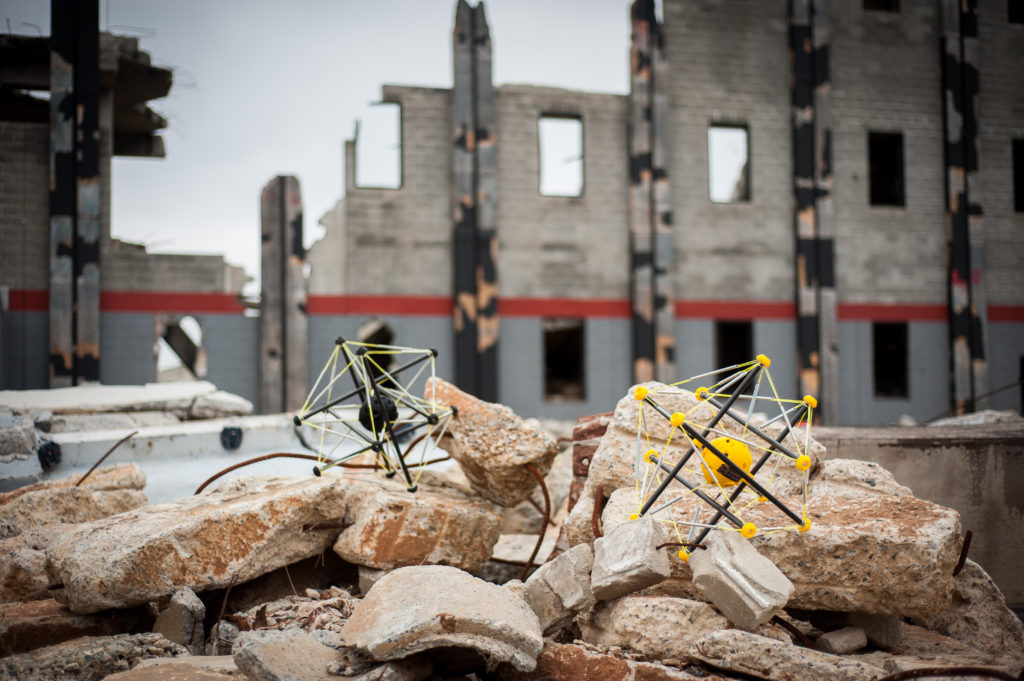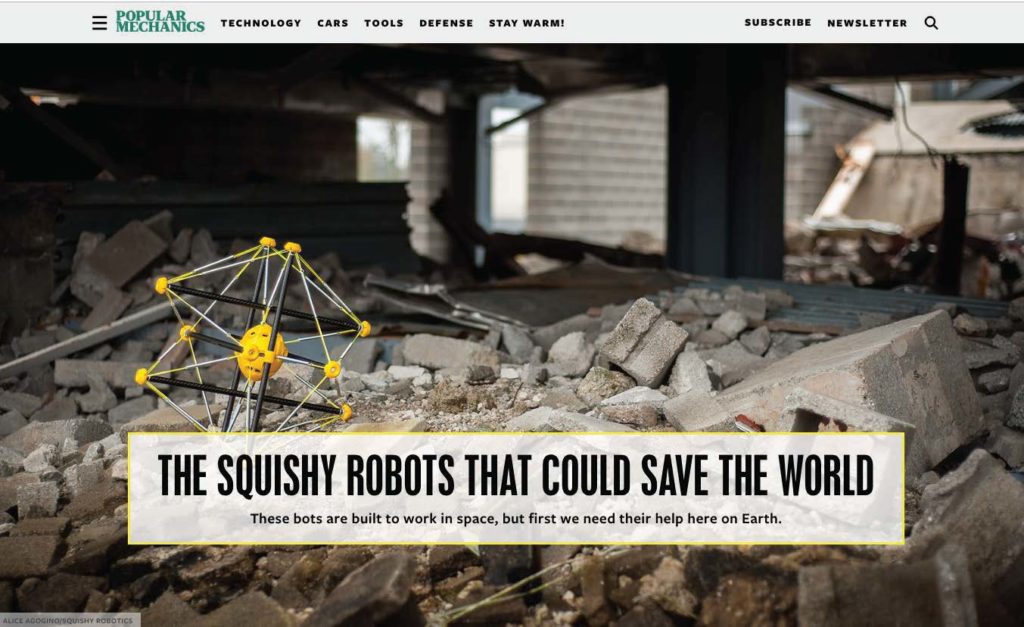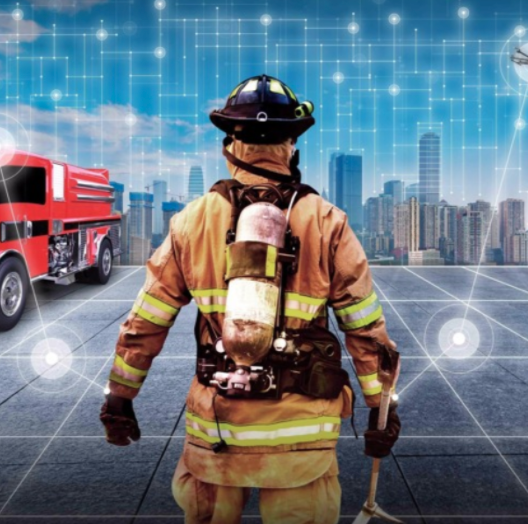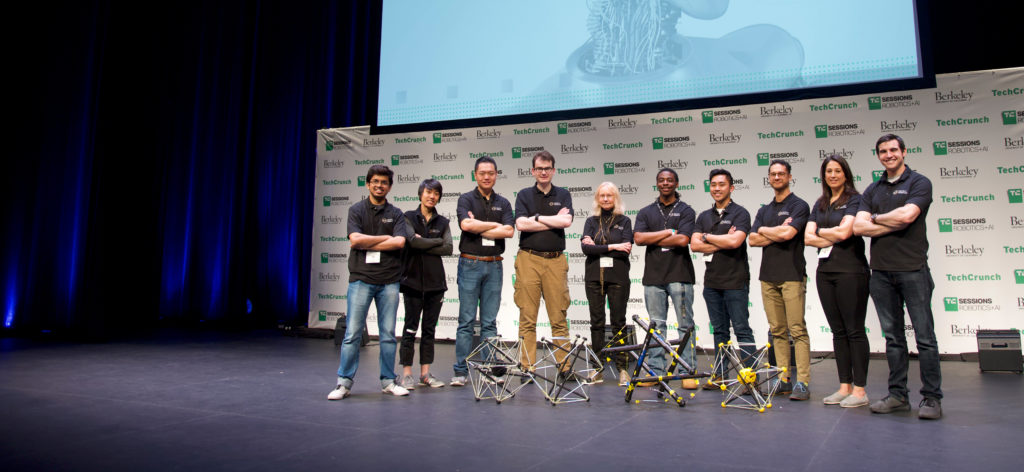Sensor Robots Can Handle Hazardous Situations

Material Handling & Logistics published an article about how our robots can be used in situations where human access can be difficult or unsafe, Sensor Robots Can Handle Hazardous Situations. Its sister publication, EHS Today, published the same story on its website. The publications serve two different managerial and professional groups: material handling managers who oversee supply chain, logistics, and material handling in manufacturing, distribution, and retail sectors and environmental, health, and safety managers in the manufacturing, construction, and service sectors.
Squishy Robotics Awarded SBIR Phase II Grant from the National Science Foundation

The $734,000 Phase II grant, will be awarded over the next two years, will enable our company to further develop our product platform while continuing to test, improve, and sell our Stationary Robot. In addition to helping Squishy Robotics perform the R&D that will assist us to de-risk future products, the SBIR Phase II grant will also match 50 percent of any investor funding up to $500,000.
These Squishy Robots Can Survive A 600 Feet Fall

The squishy robots by Squishy Robotics are about two feet wide and feature video cameras and electronic sensors housed within a ball-shaped lattice of cables and rods that help provide a buffer to the sensitive gear from any hits such as falling to the ground after falling from a great height. The basic idea behind the squishy robots is to have these shape-shifting robots deployed from the aircraft that flies over areas that have been hit by earthquakes, spills of hazardous chemicals, or wildfires.
Multiple Projects for U.S. Army

Squishy Robotics has just started working on two projects for the U.S. Army. Our company was recently competitively selected for a $108,000 U.S. Army development contract. We have also signed a Cooperative Research and Development Agreement (CRADA) with the U.S. Army Combat Capabilities Development Command Soldier Center (CCDC Soldier Center) in Natick, Massachusetts.
First Responders Get Life-Saving Sensor Readings, Video Surveillance

ISHN Magazine published two recent articles. The first provides an overview of Squishy Robotics and its technologies, and in the second, editor Dave Johnson describes how our robots “come to the rescue” in First responders get life-saving sensor readings, video surveillance. ISHN Magazine is published for safety and health professionals in high-hazard industrial and construction workplaces.
Popular Mechanics: The Squishy Robots That Could Save the World.

This article in Popular Mechanics explains how work for NASA led CEO Alice Agogino to the realization that everything that made our robots perfect for space exploration—their autonomous sensing power, remote control capabilities, and unprecedented impact durability—made our robots perfect for Earth-based disaster responders.
Smart Firefighting Podcast

CEO Alice Agogino was interviewed for Episode 54 of the Smart Firefighting Podcast. Listen to the podcast and read the article about how Squishy Robotics is providing groundbreaking innovations to reduce risks and save lives during emergencies and disasters.
ZDNet Explains Squishy Robotics’ Rapid Emergency Response

ZDNet’s reporter Greg Nichols explains how robots can go where people can’t during emergencies. Features Squishy Robotics as an example.
Squishy Robotics Post-TechCrunch News

News agencies posting articles on Squishy Robotics after TechCrunch presentation and demo.
TechCrunch Highlights Squishy Robotics

Squishy Robotics was invited to demo at TechCrunch Robotics+AI on Thursday, April 18, 2019. Alice Agogino, CEO of Squishy Robotics and Professor of Mechanical Engineering at UC Berkeley, led the demo through backdrop videos of field testing, supplemented by stage demos by the Squishy Robotics team. Notably lead mechatronics engineer Doug Hutchings threw a stationary tensegrity across […]
